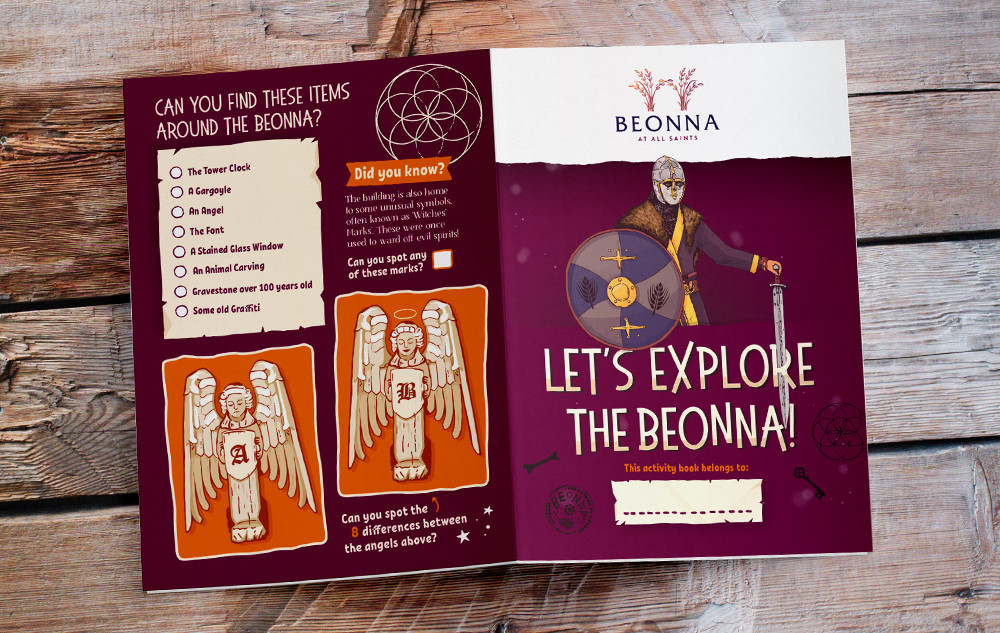Related services
The heritage, culture and tourism sectors have been hit hard by the pandemic but with light at the end of the tunnel, how can you prepare for the year ahead?
In this article we’ll be looking at the best ways to market a heritage site from storytelling to experiences, marketing tools and sustainability.
What makes heritage tourism marketing interesting compared to other sectors is that often a site’s non-financial objectives such as education and conservation are just as important, if not more so, than its financial goals.
One thing that is clear is that to attract the right audience a heritage site must focus on its audience and their experience of both the heritage attraction and its brand. Through engaging content and by sparking imagination you can attract visitors who are invested in your brand, your story and your vision.
'Heritage tourism' isn't the same as 'place marketing'
This is an important point to consider when planning out your marketing strategy. A study of Heritage Tourism Marketing outlined this distinction in an intriguing way: with heritage tourism marketing, the place isn’t the only product on offer but rather it's the history and story of that place that are the main attractions for visitors. To put this in real terms, it’s not necessarily the fabric of the building or ruins that are the main interest for visitors - instead it’s important to bring its history to life through storytelling.
The importance of storytelling
Powerful storytelling has long been the secret to any successful brand. Meaningful and relatable stories connect people and allow your messaging to resonate more strongly.
Focus on people: people love to hear stories about other people, it’s as simple as that. Social history provides a fascinating look into another world. It speaks of emotions, relationships and drama - a recipe for an encapsulating experience.
By offering real-life tales of how your historical site impacted on or influenced the lives of different members of society it provides a valuable context for your audience. These stories can be brought to life through your writing, photography, illustrations and interpretation displays. It can also take the form of video and audio or even something more interactive like re-enactments or role playing.
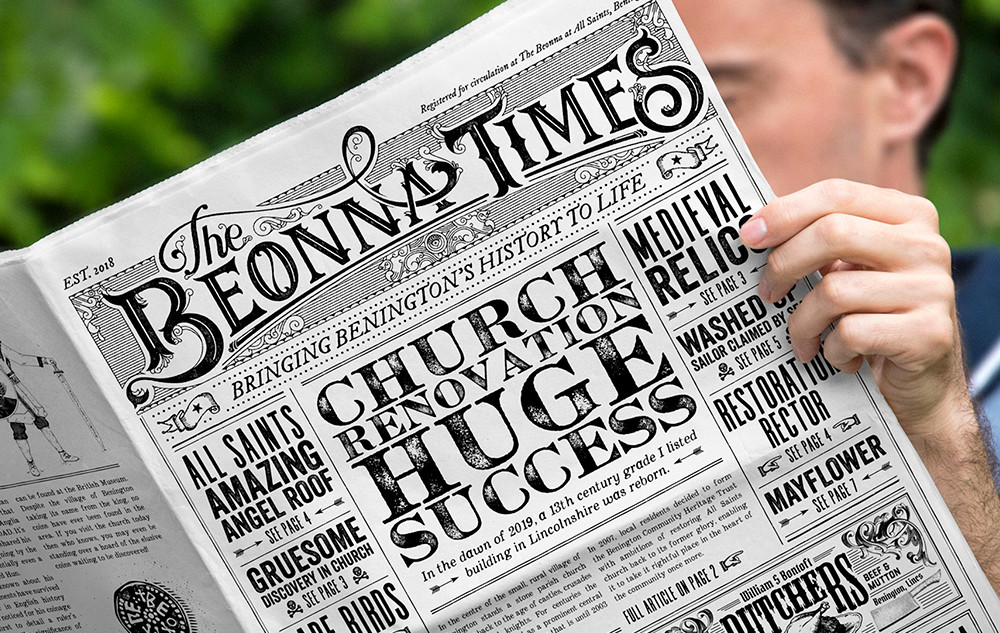
The blueprint for an engaging story includes compelling characters, emotion, tension and describing a scene from a particular viewpoint to build up a multi-sensory picture of what life was like at the time . It’s also important to consider your audience and adjust the language you use accordingly.
Experiential marketing
Another thing that visitors are looking for are experiences. Memorable life experiences are becoming more and more important in the decision making of younger generations in particular so effectively communicating the experiences that you’re able to offer at your heritage site is a must.
According to Forbes, experiential marketing (sometimes referred to as ‘live marketing’) creates lasting impressions on consumers that they want to share with others and has the ability to transform and elevate the connections that brands build with their consumers. Essentially if you’re able to immerse your visitors in a fun and memorable experience then you’re onto a winner.
This can take the form of a PR stunt or guerrilla marketing strategy where you bring the experience to the customer or you can focus on boosting the experience for visitors when they arrive on site. There are some great examples of experiential marketing campaigns on the HubSpot website if you’d like to dig deeper.
One interesting approach for this is to create what is called a ‘memory map’. This involves analysing your heritage site carefully to consider which exhibits visitors are photographing (more importantly what will they want to stand next to in their selfies or family photos?) and what will they proudly post on social media for their friends to see? What will they talk about fondly when they return home and in years to come?
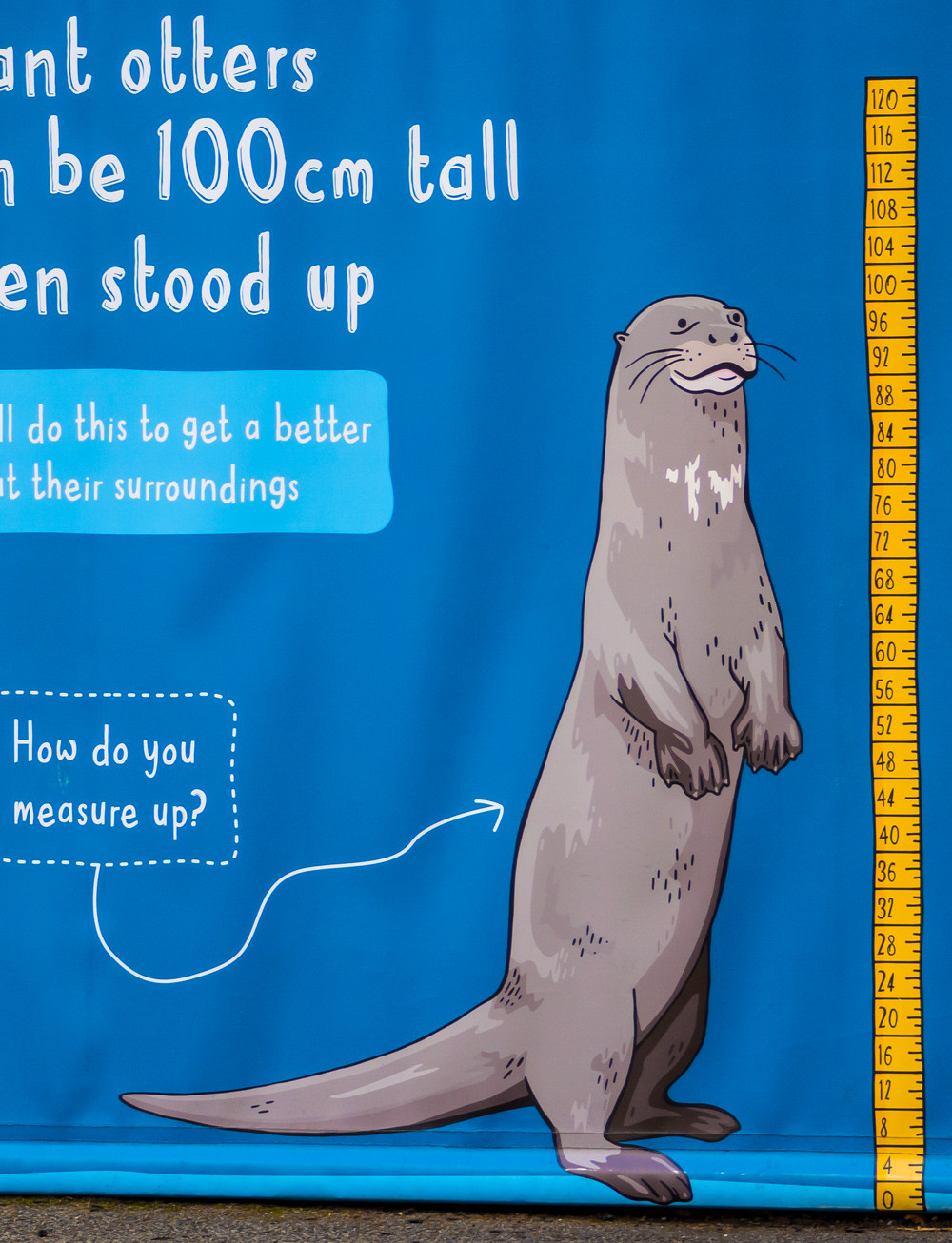
With these points marked out, think about how can you can enhance these memories it might be something as simple as reminding visitors of an experience through email, social media or within the copy of your next ad: ‘Remember what is was like to….?’.
Building an emotional attachment through branding
It’s important to remember that a brand is more than just a logo, it’s more about experiences and establishing a personality for your organisation. Creating a strong and identifiable brand is a great way to achieve loyalty and understanding amongst visitors and a focus on brand awareness can evoke a sense of trust, perceived quality and personality.
A good example of this would be to compare heritage sites that are promoted with and without a UNESCO World Heritage site title and logo. By association, a visitor is likely to have a heightened sense of expectation for the quality of this destination. The same could be said for English Heritage or National Trust sites and visitors will come to expect a similar experience at one destination to that which they received at other similar locations. Of course, if you aren’t associated with one of these badges that doesn’t stop you from building up your own strong and professional brand.
If you fully understand your audience and their values and are able to appeal to them in a deeper way, you will build a stronger emotional attachment. In order to achieve this there are some influential factors that need to be considered, namely: your brand's personality (or voice) and your tone. By considering your audience, their likes and dislikes you can tailor your content to appeal to them more directly rather than appearing like another generic brand that speaks to no-one.
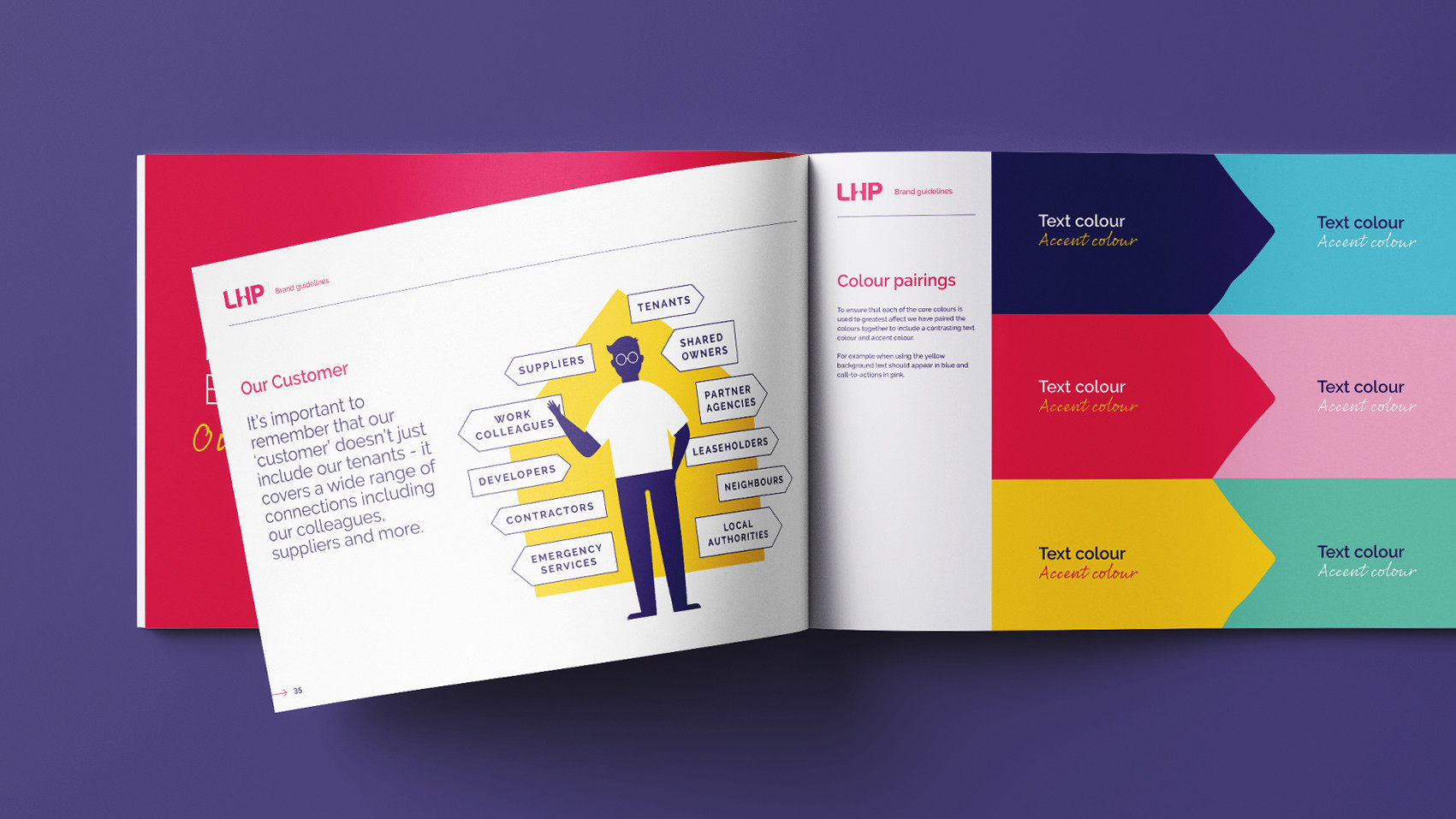
Your voice is like your brand’s personality, it should be consistent across all of your materials from signage and printed literature to your website, social media or video content. A person’s personality doesn’t change overnight (if it did you certainly wouldn’t trust them!) the same should apply to your brand. Your tone however is contextual and can differ depending on a particular situation (for example it can be happy, excited or sad) it’s the same ‘person’, different ‘emotion’.
Defining your offering
A good starting point to defining your offering would be to perform a SWOT analysis. SWOT stands for Strengths, Weaknesses, Opportunities and Threats, for each of these headings create a list for your organisation - this is also a great way to focus on any issues that might need resolving.
Strengths
What do you do well? What is unique about your site? What would others see as your strengths?
Weaknesses
What could you improve upon? Are there any areas in which you are lacking compared to other similar sites? What would others see as your weaknesses?
Opportunities
How can you turn your strengths into opportunities? What trends can you take advantage of?
Threats
Who are your main competitors and what are they doing differently to you? Which of your weaknesses pose a potential threat? What could harm you or the areas you’ve highlighted as strengths?
Following this, it’s vital that you have some input from your existing visitors. Ask them - what they love about visiting your site, why they chose to visit, how they think it could be improved and what other similar sites they’ve visited and what they enjoyed most about those too.
Finally, world-renowned author and inspirational speaker, Simon Sinek encourages businesses to create their ‘why statement’. He argues that your WHY is the purpose, cause or belief that drives you. In his book ‘Start with Why’ Sinek explains how ‘people don’t buy what you do; they buy why you do it'. And what you do simply proves what you believe.
So, the aim of creating a definition of your offering is to not only highlight your USP (unique selling proposition) but to understand your ‘why’ (not just your ‘how’).
Defining your audience
Just as important as defining what makes you tick is to consider the same for your audience to ensure that your brand remains relevant. If you’re aiming your marketing at everyone and anyone you’re making life very difficult for yourself and are making it almost impossible to resonate with anyone on a deeper level. The simplest way to approach this would be to ask the four W’s: Who, What, Where and Why.
Who are your visitors, where are they coming from and where else do they go? What do they value, what do they want and why would they want to visit a heritage site like yours?
It might be that you have multiple categories within your overall audience, these are called ‘segments’ and by segmenting your audience you provide the opportunity to dig deeper into values, pain points and influences allowing for more targeted marketing campaigns.
Creating a user journey map
We’ve been advocates for the importance of creating a user journey map for a few years now and nobody explains it better than Customer Experience Consultant, Paul Boag. So what is a customer journey map? In short, it’s a representative of a typical visitor experience over time.
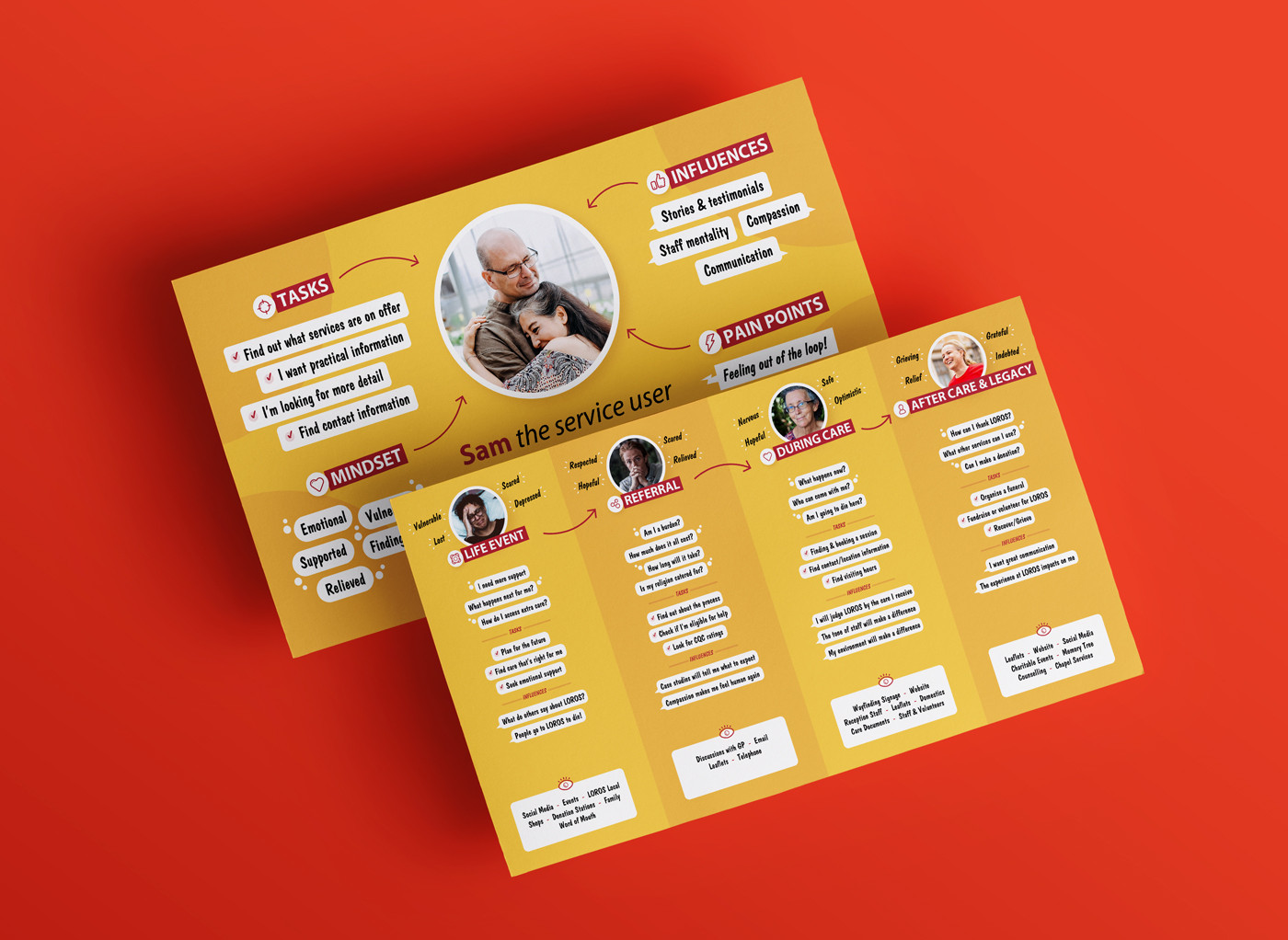
An example user empathy map and user journey map we created for LOROS Hospice
Whilst creating your user journey you’ll consider the various questions, tasks, difficulties and influences that they are likely to be experiencing. The eventual road map that you create will become a valuable blueprint for your marketing team, customer experience team, management, designers and so on.
Sustainable tourism
A study on sustainable tourism marketing strategies at Unesco Heritage sites questioned whether measuring the success of heritage and cultural marketing should be judged solely on the merits of increased visitor numbers when this could in fact prove detrimental to these heritage sites should this increase put a strain on site preservation.
This is an interesting dilemma - increasing visitors to a heritage site and introducing its historical importance to a wider community is of course a major goal but it’s important that there is a balance between this visitor impact and site maintenance.
A true sustainable model takes into account a delicate balance between three factors: society, environment and economy. A good example of how difficult this can be to achieve would be the city of Venice. The entire city has been designated as a World Heritage site and it’s history is open for all to see but if you’ve ever visited you will be aware of the challenges that its popularity brings and how detrimental this is not only to the experience of this unique place but also to the conservation of its streets and architecture which is unable to cope with the volume of visitors it receives year on year.
The other issue is that many of these visitors aren’t actually contributing to the local economy - they visit for the day on a cruise or stay outside the city and they tick off the city on their bucket list without paying to visit attractions - all the while putting a strain on the local resources.
Introducing ‘demarketing’
There are a number of ways in which the study proposes that heritage sites can achieve a more sustainable model and they call it ‘demarketing’. Demarketing is not the opposite to marketing as you might think, instead it’s a process for decreasing the overall volume of visitors by discouraging a certain audience in order to increase preservation.
Many heritage sites already have these measures in place and you’ll be able to recognise them. Methods include selective and targeted marketing to the most desirable audience rather than blanket marketing to the whole population (this is common for all businesses), promoting the importance of preservation to visitors before they arrive, publicising other sites as alternatives, limiting visitors seasonally, making more fragile exhibits more difficult to access and increasing the entrance fees to ensure that only the most interested and respectful of audiences are visiting.
Price strategy
There can be a temptation to decrease or remove entry fees altogether in order to attract a wider audience and make your exhibits available to all - this does however raise a question of sustainability (as we touched on earlier). Interestingly, there are arguments before and against fees, benefits to increasing admission prices include the obvious increase in revenue but also allows you to capture more information about your visitors whilst decreasing the number of casual, less invested visitors, both of which have a positive impact on continuing to preserve the heritage site for future generations.
On the flip side charging for admission may detract certain audiences such as families and locals that could potentially visit briefly several times throughout the year should the admission be free or inexpensive. It's a difficult decision but one that should put the customer experience at its heart - if for instance, charging for entry allows you to improve your facilities and protect the quality of the exhibits then this has real value however if your ethos is to make your heritage site accessible to all then free entry may be more appropriate for your brand.
One assumption might be that visitors who have been charged an admission fee are then less likely to spend in gift shops or on-site cafes and restaurants. Actually, evidence has emerged showing visitors to charging museums are actually more likely to spend than those visiting a free-entry museum. Studies by the Association of Independent Museums have found that those visiting a free attraction are unlikely to spend in secondary areas like shops and cafes so from a financial perspective this dip in footfall shouldn’t have much of an impact. This is illustrated by PricingSolutions.com showing that as price levels increase and volume of visitors decreases the overall revenue of the attraction continues to rise.
Other studies like this one by MORI suggest that more than half the visitors to free museums aren't spending anything during their visit (taking 'free entrance' to mean 'free trip'). They also concluded that, though there was an increase in the number of visits overall when making a museum free entry, the increase appears to have come from the same audience that would traditionally visit museums anyway (so it didn't actually encourage different audiences).
Many suggest however that this could all be subject to the quality of the facilities on offer (the shop, the cafe/restaurant etc.) and that if these areas are improved then visitors are likely to spend more regardless of the entry fees.
So, whilst it’s likely that moving from free to charging will result in a decrease in overall visitor numbers, the financial position of the museum will be much stronger building up a more sustainable model to maintain the artefacts for years to come. BUT as we mentioned in the introduction to this article - is financial gain the priority for your brand?
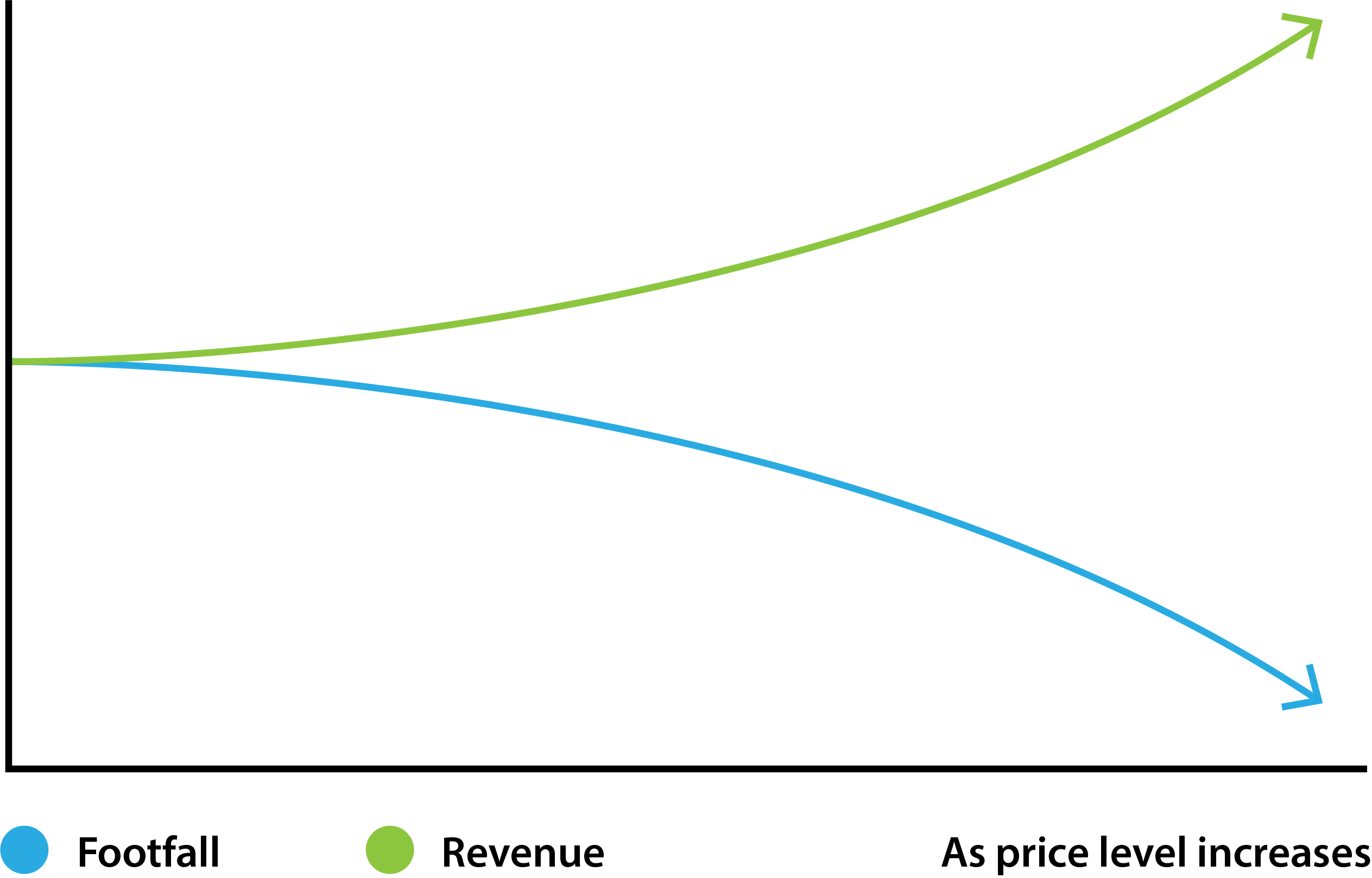
Graph for illustrative purposes only
Things to consider within your pricing strategy are your ‘offering’ and your ‘audience’. Think carefully about your heritage site’s cultural significance within the local area and the experiences you have to offer and price accordingly.
Marketing tools
There are a wide range of opportunities for you to spread the word about your heritage site from the more traditional paper-based marketing, to digital marketing and experiential options. A good marketing strategy should include a mixture of the following:
Printed Marketing
Social Media, Influencer Marketing & Video
Website, SEO & Content Marketing
Pay-per-click Ads
Email Marketing
Networking & PR
Word-of-mouth
Guerrilla and Experiential Marketing
Outbound vs Inbound Marketing
Radio & TV
A digital experience
Even though your attraction celebrates the old-fashioned there’s no reason why your marketing should be stuck in the dark ages. We say embrace digital to enhance customer experiences and brand connection.
A wider digital experience of your offering could start with your website. This should be responsive (mobile optimised) and focus on bringing your content to life by adding drama and providing an extension of the same atmosphere that visitors would experience at your physical site. Website features could include interactive exhibits, animated games, maps and virtual tours. It could also include live discussions and webinars, video content, even 3D content.
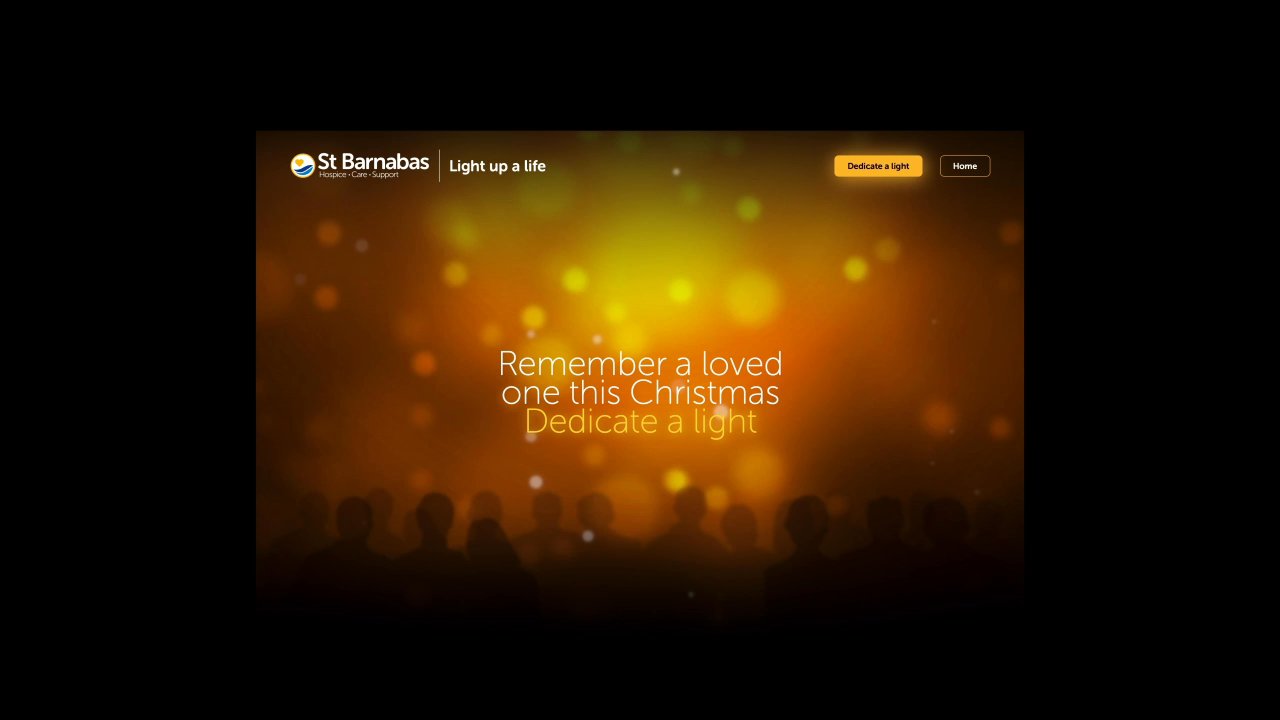
The website we produced for St Barnabas Hospice captures the atmosphere of their annual torchlit procession through animation, video and an immersive design.
Digital doesn’t stop at home though, when people visit your heritage site they can use augmented reality to add an extra layer of information to your exhibits and QR codes can direct them to video or audio content that adds another dimension to the site’s history and the stories you’re trying to share.
Monitoring & evaluating your marketing
One thing you must do is plan, measure, refine and repeat. Marketing of a tourism site never ends, it’s a constant cycle of design and iteration that will see your organisation go from strength to strength.
Things you should be measuring include your website’s analytics to measure the quality of your visitors (not necessarily the quantity) and how engaged they are with your content, sales figures through your ticketing or CRM system, customer services and overall customer satisfaction and brand awareness. Of course there are many more attributes that you can be measuring and the more data that you have to build an overall picture of your success the better. Another vital statistic is your ROI (Return On Investment) - if you find that you’re attracting great numbers of visitors but the costs of your campaign are astronomical then your marketing approach isn’t sustainable.
When planning a campaign it’s also important to focus on how you can measure its success (typically referred to as KPIs or Key Performance Indicators). Establish a baseline or average expected rate and project targets that you feel are achievable through the campaign. When you analyse against these KPIs think ‘why did we get this result from this campaign?’ and ‘how could we improve this further next time?’.
In conclusion
As with any business, successful marketing for a heritage site requires research and planning, strategy, creativity and evaluation. There's no simple checklist that will work for everyone but there are a wealth of tools and approaches available to ensure that your brand appeals to the right audience and highlights what makes your site truly unique. If you'd like any assistance with your marketing plan or would like to discuss a project with our design team we'd love to hear from you!
For more news follow us @rootstudiouk
Similar posts
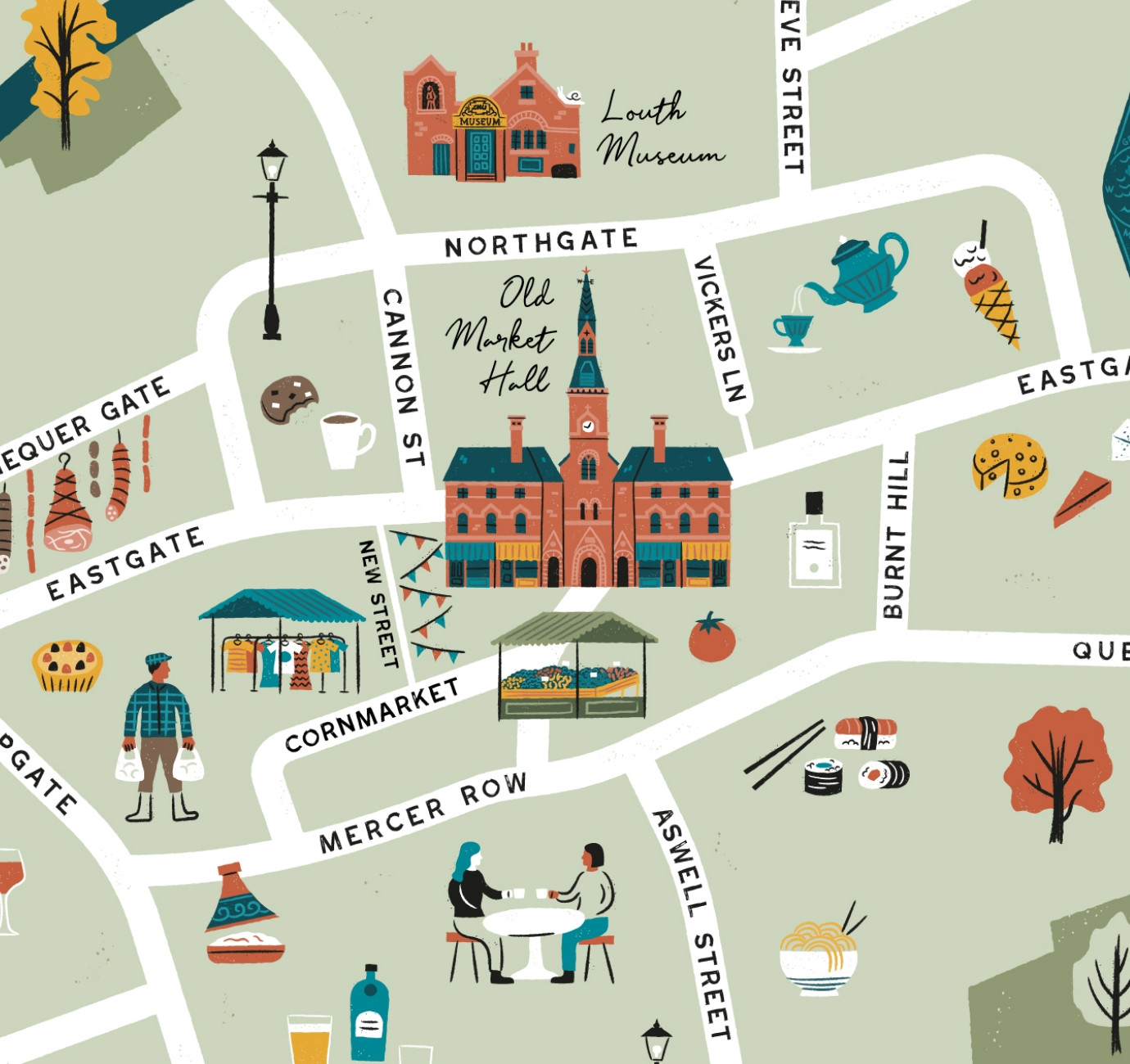
Illustrated maps can capture the essence and personality of a place, embodying its character and charm in a visually captivating way. In this article, we'll delve into the many considerations that you and your designer should make whilst crafting your illustrated visitor map.
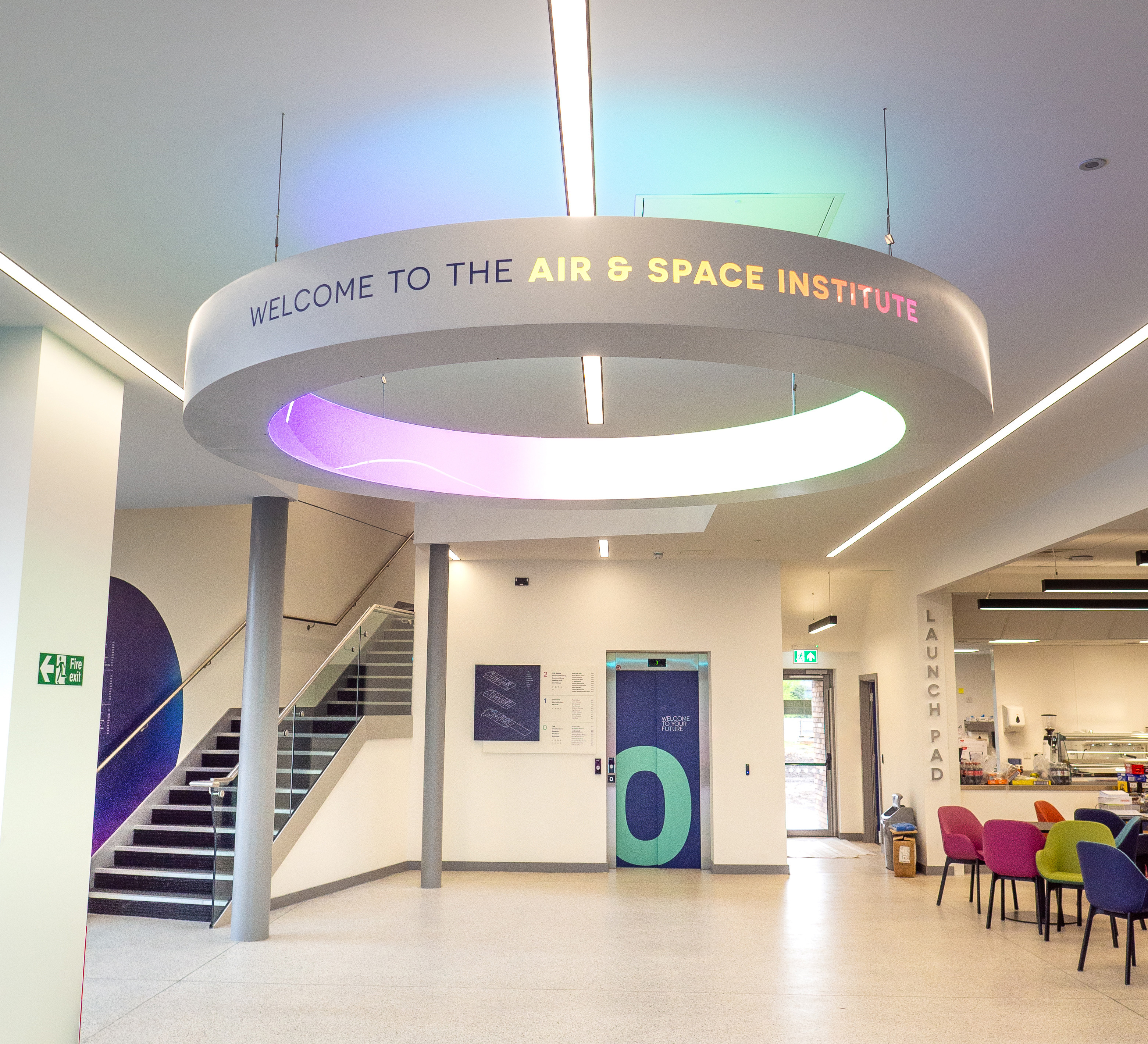
In recent months we've been working with the Lincoln College team behind the scenes at the development of their groundbreaking ASI campus in Newark to develop a cohesive and innovative collection of signage and wayfinding graphics for students, visitors and staff of the site.

